Once you have opened a Maxima session, load package draw and then set global variable draw_renderer to vtk:
load("draw") $
draw_renderer: 'vtk $
To read the documentation on object parametric, write the following sentence:
describe(parametric) $
Parametric plot in 2D:
draw2d(
background_color = light_red,
color = white,
nticks = 150,
line_width = 3,
dimensions = [300, 300],
xlabel = "X Axis",
ylabel = "Y Axis",
parametric(
1.5*cos(t)-cos(5*t),
1.5*sin(t)-sin(4*t),
t, 0, 2*%pi) )$

A Lisajous curve and a circumference, with different widths, colors and styles:
[a, b]: [1, 3/2] $
draw2d(
nticks = 200,
line_width = 5,
parametric(4*sin(a*t/b),3*sin(t), t, -3*%pi, 3*%pi),
color = red,
line_width = 3,
line_type = dashes,
parametric(sin(t),cos(t), t, 0, 2*%pi) )$
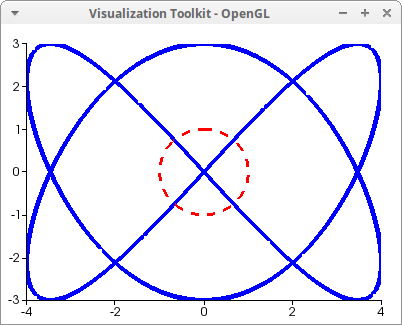
Geometric transformation of a 2d parametric curve:
para : parametric(2*cos(r),r,r,0,2*%pi) $ draw2d( para, transform = [v+6,u,u,v], color = red, xlabel = "X Axis", ylabel = "Y Axis", para)$
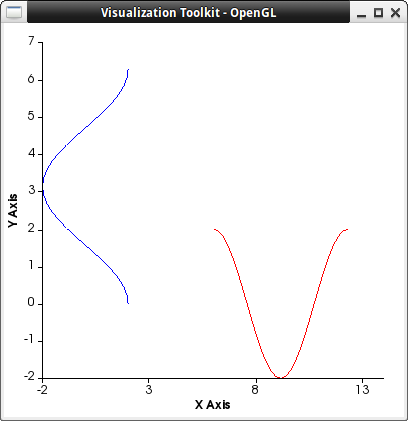
A simple parametric curve:
draw3d( parametric(t, t, t^2, t,0 , 1) ) $

Two parametric curves of different colors and widths:
draw3d( nticks = 100, color = navy, line_width = 3.4, parametric(t*cos(t),t*sin(t),2+t,t,0,5*%pi), color = brown, line_width = 5.7, parametric(t*cos(t),-t*sin(t),2+t,t,0,5*%pi) )$
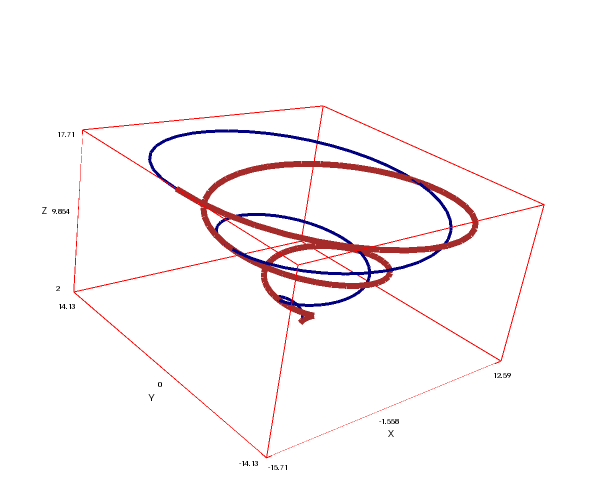
Two parametric curves with varying colors according to the enhanced3d model. Note that the curves are colored with different palettes:
draw3d( nticks = 100, line_width = 5, enhanced3d = (u-1)^2, parametric(cos(5*u)^2,sin(7*u),u-2,u,0,2), palette = gray, enhanced3d = [z,x,y,z], parametric(3+sin(5*u)^2,sin(7*u),u-2,u,0,2) ) $
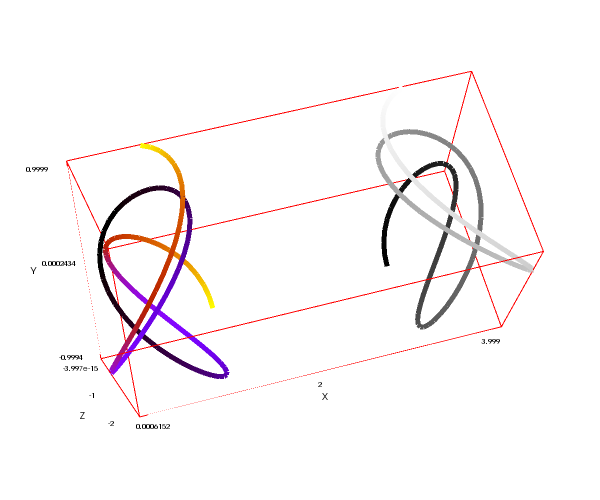
Parametric curves with different values for option line_type:
draw3d( nticks = 100, line_type = dot_dash, color = navy, line_width = 4, parametric(t*cos(t),t*sin(t),2+t,t,0,5*%pi), line_type = dashes, color = brown, line_width = 5.7, parametric(t*cos(t),-t*sin(t),2+t,t,0,5*%pi), line_type = solid, color = red, line_width = 1, parametric(t*cos(t),-t*sin(t),-2-t,t,0,5*%pi), line_type = dots, color = black, line_width = 8, parametric(t*cos(t),t*sin(t),-2-t,t,0,5*%pi) )$
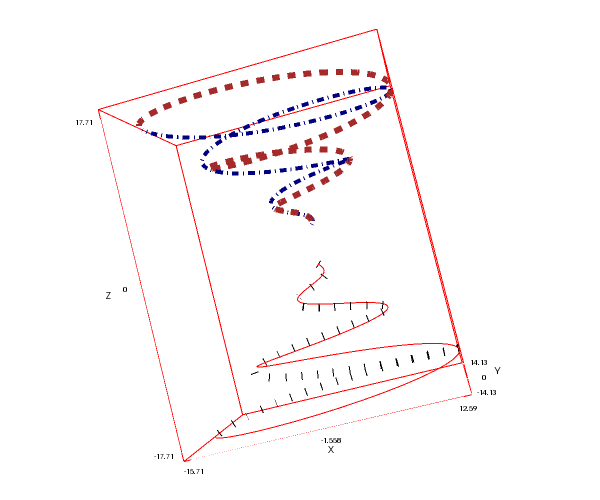
Tubular parametric curves. The first curve is painted with the default solid color, and the second with the enhanced3d model. See also that the second curve is obtained after a geometric translation:
draw3d( nticks = 100, line_type = tube, parametric(t*cos(t^2),t*sin(t^2),t^2,t,0,%pi), enhanced3d = true, transform = [x+5, y+5, z+5, x, y, z], parametric(t*cos(t^2),t*sin(t^2),t^2,t,0,%pi) ) $
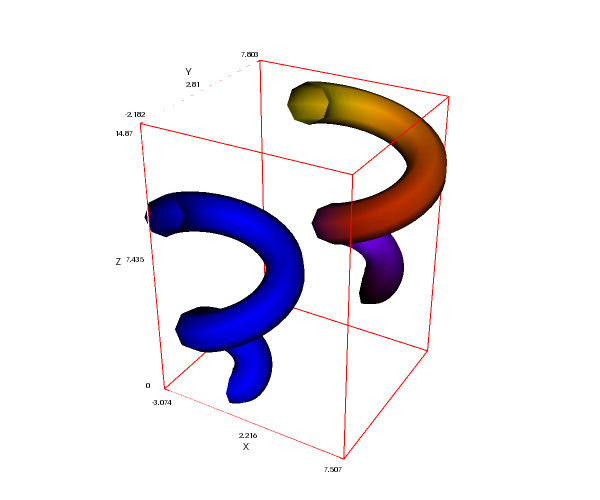
Combining a tube with dashed curve:
draw3d( nticks = 100, line_type = dashes, parametric(t*cos(t^2),t*sin(t^2),t^2,t,0,%pi), color = yellow, line_type = tube, line_width = 0.5, parametric(t*cos(t^2),t*sin(t^2),t^2,t, %pi/2, 3*%pi/4)) $
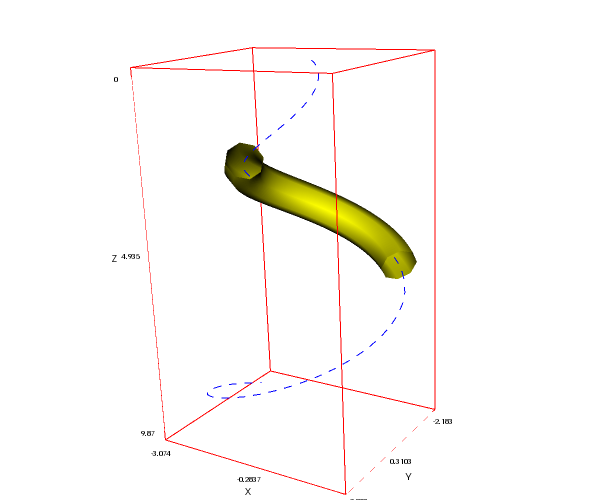
Tubes with different number of faces (minimum is three). Option opacity is also available for parametric object:
draw3d( nticks = 100, line_type = dashes, parametric(t*cos(t^2),t*sin(t^2),t,t,-%pi/4,%pi), color = yellow, line_type = tube, line_width = 0.5, parametric(t*cos(t^2),t*sin(t^2),t,t, %pi/4, 6*%pi/7), color = "#c59af0", line_type = [tube, 3], line_width = 1.5, opacity = 0.7, parametric(t*cos(t^2),t*sin(t^2),t,t, %pi/2, 3*%pi/4)) $
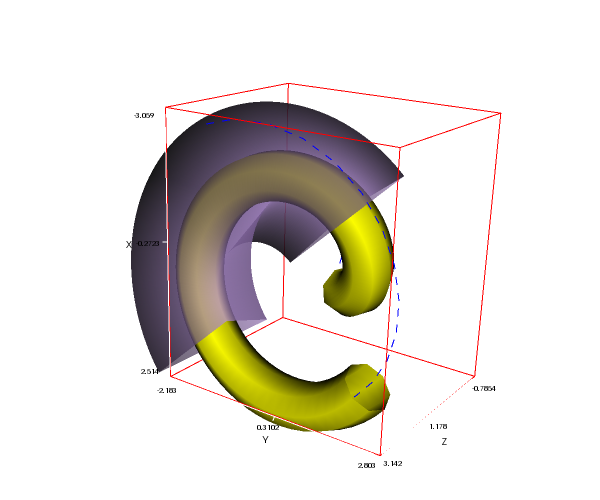
© 2011-2016, TecnoStats.